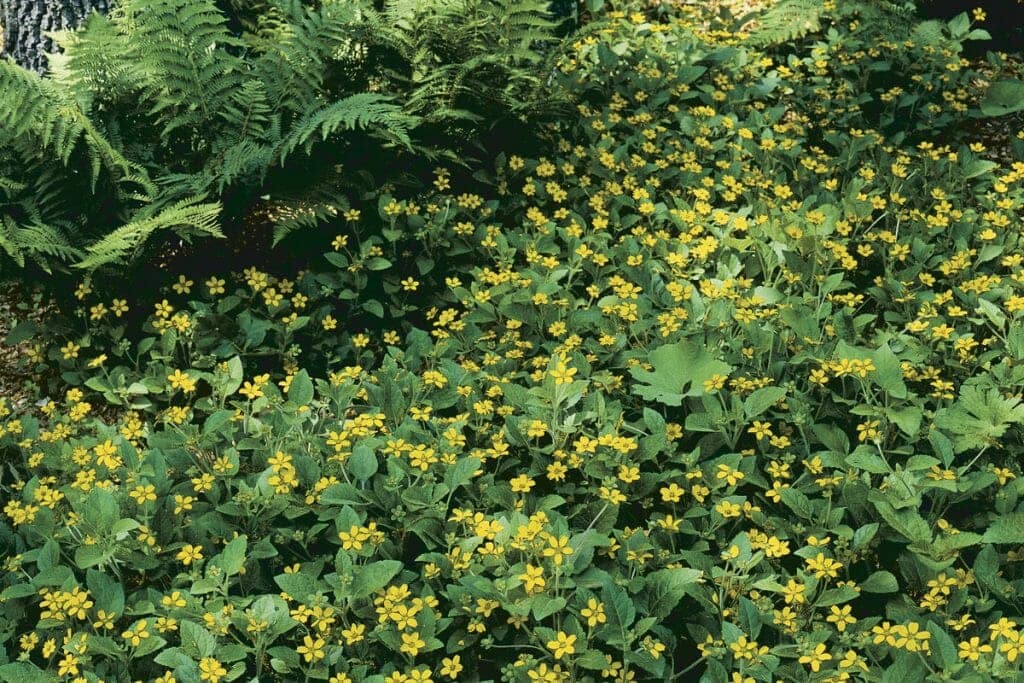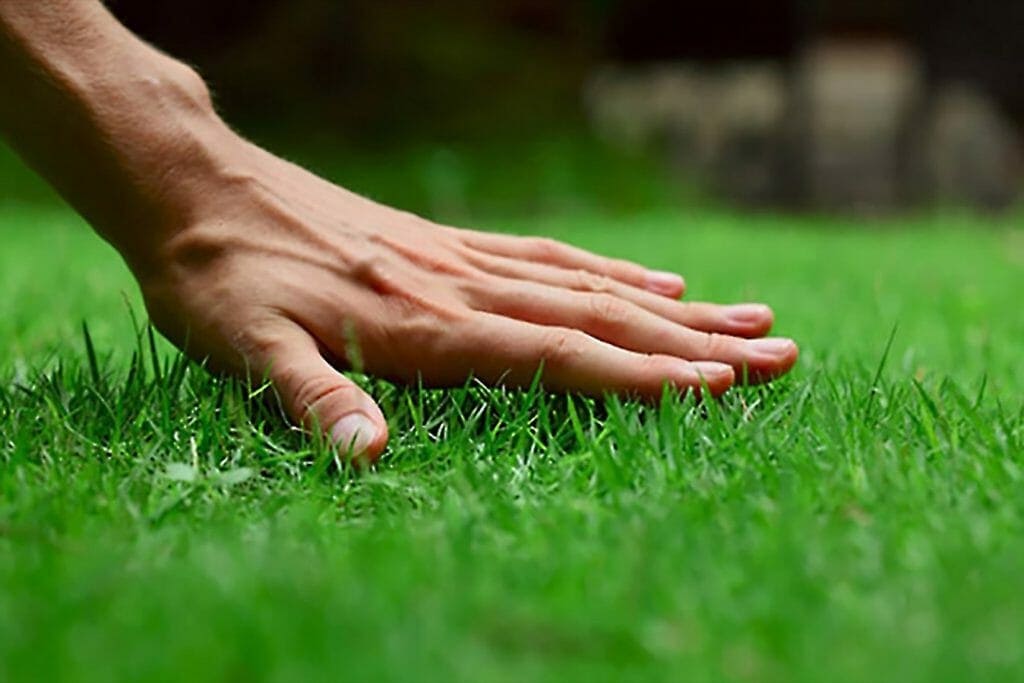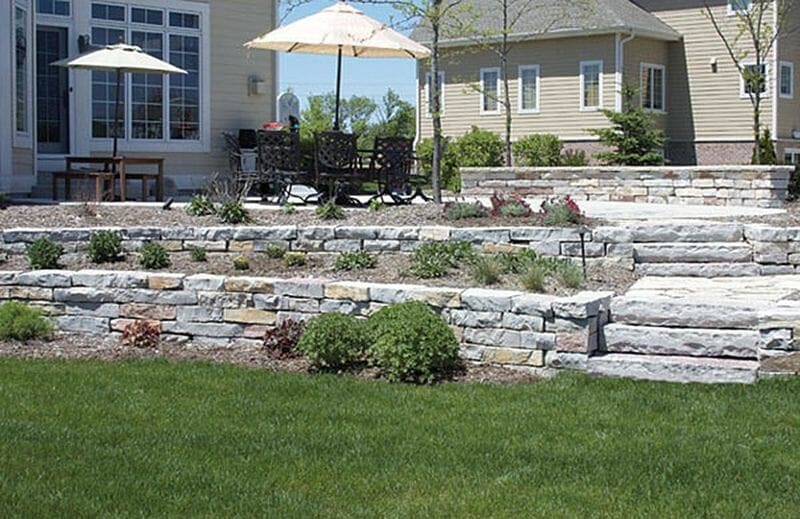Written by Sarah Littleton and https://www.bobvila.com/.
Ground cover is an eco-friendly solution that can enhance the look of your landscape while providing a number of important benefits. However, many varieties need several seasons to become established. If you don’t want to wait that long, The Grounds Guys have a number of options for a fast-growing ground cover that can quickly transform your outdoor space by filling in vacant or underdeveloped areas with texture and color.
The Best Low-Maintenance Ground Covers for Your Garden
Whether you do it yourself or you pay a landscaper, maintaining a vibrant garden and lush lawn requires time, effort, and money. One way to cut back on the energy and resources you put into your yard is to incorporate ground covers into the landscape.
Heuchera
An evergreen perennial, heuchera is known for its vibrant foliage, which ranges in color from silver to green to brown. The large, veined, heart-shaped leaves have a spread of 18-24 inches, and most varieties bloom in late spring with small pink flowers. When planted in groups, heuchera works well as a ground cover or along garden edging. The plant prefers partial shade or full sun and well-draining moist soil. What’s more, it requires relatively little maintenance, and it resists deer and other critters.
Honeysuckle
Want to lure hummingbirds, butterflies, and other wildlife to your garden? Plant some honeysuckle! Also known as lonicera, honeysuckle is an aromatic perennial that blooms with white, yellow, or red flowers in the spring and summer. Many homeowners position honeysuckle to grow vertically along trellises, but they can also serve as a beautiful ground cover. Honeysuckle grows best with full sun and moist soil, and the plant is resistant to heat.
Brass Buttons
Named for the color and shape of their flowers, brass buttons stand out perhaps most of all for their serrated, fern-like leaves. In fact, brass buttons share the same Achilles’ heel as ferns—both succumb easily to drought. In moist soil, however, brass buttons spread vigorously, forming two-inch-tall mats of growing strong and thick enough to withstand even regular foot traffic. In the South or West, the ground cover may lose its leaves or die back in the cold months. But in the right climate, brass buttons remain evergreen, beautiful, and low-maintenance all year round.
Creeping Phlox
Few ground covers ever look as beautiful as creeping phlox in spring when it produces an explosion of fragrant, star-shaped, pastel-color flowers. Of course, since it matures to a maximum height of only six inches tall, many gardeners choose to plant creeping phlox on a slope, or along the top of a retaining wall. That way, you don’t have to be standing directly over the plant in order to appreciate its beauty. That said, precisely because creeping phlox looks so beautiful from the top down, many use the ground cover to define the borders of garden paths. So long as the site affords full sun and good drainage, creeping phlox requires next to nothing in the way of care.
Creeping Jenny
Equally at home hanging from a planter or covering a hillside, Lysimachia (more commonly known as “Creeping Jenny”) is a plant known and revered for its trailing branches. Each plant takes on a green fountain-like appearance: Long, lush chutes of chartreuse foliage sprout up from the soil, then softly twist and tangle for full coverage wherever planted. Aside from good exposure to sunlight, these leafy green clusters ask little of their gardener—no need to deadhead branches that lose their vibrance, replant every season, or ward off hungry deer (they’re naturally resistant!).
Stonecrop
Need an easy, evergreen carpet to plant where no grass daring grow? Though its lush leaves don’t scream “drought-tolerant,” sedum boasts an ability to root and thrive in even the driest, rockiest settings—thus earning it the familiar name “stonecrop.” The secret? Those fleshy, bluish-green leaves help retain what little water it receives. Aid with a little mulching and weeding to prevent unwanted sprouts from stealing water from these low-maintenance succulents, and you can enjoy their cheery color year-round—even starry yellow buds when the plant blooms in spring.
Vinca Minor
The dainty purple flowers and evergreen leaves on this vine make it one of the most popular ground covers in residential and commercial landscaping. Also known as periwinkle, vinca minor will spread wherever it’s planted and will even scale trellises or fences if trained. Because vinca has few pests, it can be considered invasive, which is good news if your goal is to keep weeds at bay. If you want your vinca minor to play nice with other plantings, though, you’ll need to cut it back on a regular basis.
Lamium
Under even the most unforgiving of conditions, lamium prevails. This vining plant, also known as dead-nettles, can tolerate cold, heat, drought, and is deer-resistant. There are more than 40 species of lamium, but the best are those that are flowering perennials like the Pink Chablis. The low-maintenance plant thrives year-round, rewarding you with delicate blooms in spring and summer. Lamium spreads quickly, so be ready to cut it back if it begins to encroach on other shrubs and flowers.
Grace Ward Lithodora
Thanks to its bold blue hue and its ability to attract butterflies, the grace ward lithodora will add bursts of color to your landscape from spring throughout summer. A low-lying ground cover is a popular option as a filler for rock gardens or as an accent above retaining walls. In addition to making your garden look good, it also helps it out. The plant works as a natural deer repellent (the animals dislike the taste of the flowers) and works to control erosion. In extremely hot climates it needs a little shade, but otherwise, it enjoys being in the sun.
Creeping Thyme
The soft, aromatic creeping thyme seems to be a plant that checks off all the boxes for a gardener, plus more. The low-lying ground cover—it grows no more than four inches tall—is able to endure being stepped and stomped on, making it a smart choice for planting between pavers or replacing grass entirely. It’s preferable to moderate climates but is able to withstand full sun and drought-like conditions. It also works to control weeds from growing and is a natural deer repellent. And while deer might not like the creeping thyme’s pink flowers, it does attract butterflies and honeybees—it’s even believed that it enhances the honey’s flavor. On top of all of that, assuming you take proper care of the plant, it lasts for five to six years, in which during that time you can harvest your own fresh herbs!
Cover Up
Ground covers are an easy way to add color to your garden without much work. Want more fool-proof florals for your garden? These plants will thrive with minimal maintenance on your part.
Whether you’re a lawn care novice or a master gardener, everyone can use a little help around the yard. Subscribe to The Dirt newsletter for tips, recommendations, and problem-solving tools that can help you tame your great outdoors.
Original post here https://www.bobvila.com/slideshow/the-best-low-maintenance-ground-covers-for-your-garden-51253#bv-us.



